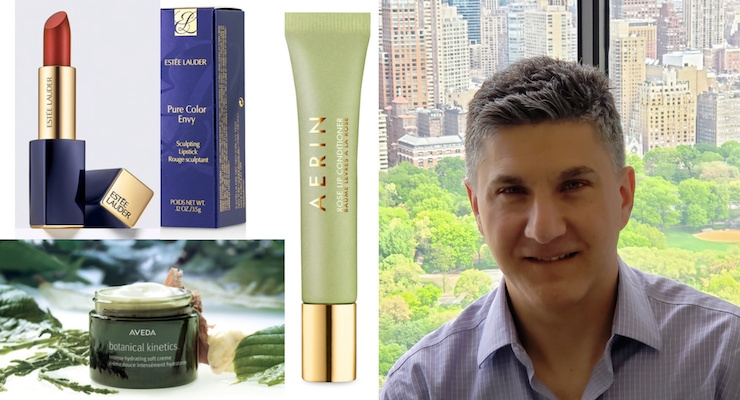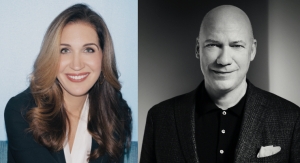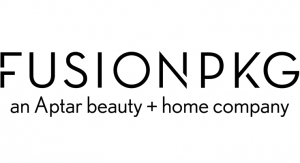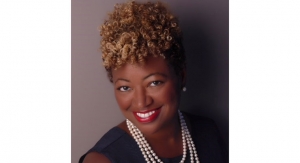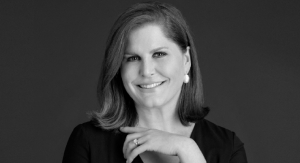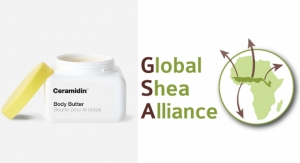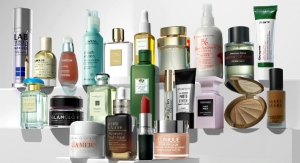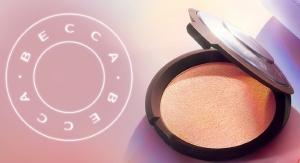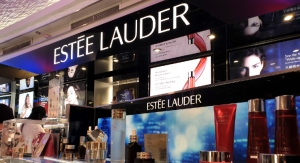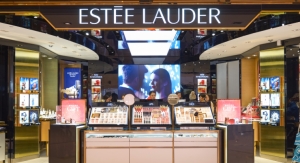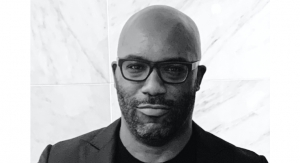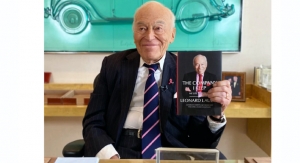Allan Hafkin, Vice President of Packaging Development at The Estée Lauder Companies07.18.19
Editor’s note: The following is from Allan Hafkin’s presentation as a member of Beauty Packaging’s panel at Luxe Pack New York, May 15, 2019.
I am so honored to be asked to speak in this forum about a subject I am quite passionate about—Sustainability: The New Conversation.
I must admit that I do live in a bit of a paradox. I’m also quite passionate about burning fossil fuel. I enjoy nothing more than the smell of burnt rubber and un-burnt fuel on a racetrack. The soundtrack of an air-cooled 1100cc Ducati motorcycle revving at high RPMs with a racing exhaust is the ringtone on my phone. I drive a 2002 Chevy Suburban that averages about 11 miles to the gallon when not in 4-wheel drive.
I often feel bad about all of this. How can I be so concerned about the environment and still knowingly contribute to the depletion of our ozone layer? Life is full of compromises, but how can we improve the world we live in without sacrificing all the things we love?
I try to offset my vices with real tangible things I can do that positively impact the environment. For example, I am the sorting and recycling police in my home. I installed solar panels on my roof at home. I analyze my power consumption and continually look to improve efficiency. I’ve been converting to high efficiency LED lighting.
I’m proud to say that almost 90% of the electric energy I use is generated by renewable energy, and I fully expect to achieve 100% by 2025! Giving myself a few years!
So, why am I telling you this?
I believe now, more than ever we are all investing more in experiences. We are also building an understanding of our own impact in the world and would like to find ways to minimize or offset the negative with positive ones.
We work in an industry that was built to enhance the human experience. We make products to augment beauty and instill confidence. We make products that allow people to express themselves as individuals and create a special experience.
Packaging has so much to do with the consumer experience and even the performance of the products we make, but packaging also contributes to the environmental challenges we have today.
At The Estée Lauder Companies, we want to distinguish ourselves and provide our consumers with luxury experiences and high-performance products, yet we understand that there are environmental implications.
Not only do we know this, but our consumers do as well. Although all consumers don’t consider the environmental impact of the packaging as the most important criteria for their purchase intent, I do believe that all consumers care, in some way about the environment.
Today, there are thousands of companies fighting for a piece of this multi-billion-dollar industry. I am not here to provide insight on how to gain share in this. Most of you already
know that the consumer landscape has changed. I’m not here to provide any special consumer insights either, other than acknowledging the fact that we are all consumers.
I’m a consumer and I have changed. I think it’s impossible to live in a globally connected society and not understand to some level the responsibility we all share in not only maintaining, but improving the world we live in. I also believe that people will make choices that are not always congruent to their principles. We will make choices because of a connection we have with a brand or the way using a product makes us feel. Consumers, like me, will justify their purchase choices based on this.
How does this relate to Luxe Pack?
The name of this event is important to the conversation. What is luxury packaging? Well, it’s different to everyone. To me, it’s a vehicle that enhances, protects and enables the delivery of a product in a way that not only promotes a brand image, but creates an emotional connection to the consumer.
Brand image means something different to every brand. I think as Packaging professionals we need to help our brands define this from a packaging perspective.
As advocates for a sustainable future, we need to help our brands make educated decisions.
That said, every brand is clearly not going to make the same decisions. Each of the more than 30 brands at The Estée Lauder Companies has a unique identity. As such, there are decisions we make that we believe resonate best with each of our brands’ consumers.
This is true from a Sustainability standpoint, as well. Some consumers feel so strongly about a brand’s social or sustainability story that it becomes the first criteria in their mind. Other consumers may focus on product performance, trends or maybe what their favorite Instagram celebrity or “Youtuber” might be using.
As packaging professionals, we must help guide our brands to make informed decisions. We depend on our industry for support in helping to exceed our customers’ expectations as well as our corporate goals.
What’s driving the decisions companies are making?
Recently, The Estée Lauder Companies announced our 2020-2025 Environmental, Social and Governance (ESG) goals: By 2025, our goal is to have 75-100% of our packaging be recyclable, refillable, reusable, recycled or recoverable.
In achieving this goal, we will increase the amount of post-consumer recycled material in our packaging by up to 50%. Our ambition is to use responsibly-sourced paper products whenever possible with a goal to have 100% of our forest-based fiber cartons FSC certified by 2025.
ELC is not alone in creating goals. In fact, many of our competitors have announced their own ambitious goals, some of which have been designed around the regulations that are being proposed and enforced around the world.
Whether a brand calls out the sustainability story of its products or not, there is a growing expectation from consumers that global companies are doing something to improve or at the very least sustain the local or global environment. It’s not just the government regulations, it’s the shift in consumers’ mindset.
Many of ELC’s environmental initiatives began long ago, while some are new initiatives enabled by technology and driven by the ever-changing global policies. Before Millennials were of age to drive, let alone order an Uber, companies like The Estée Lauder Companies recognized the need to protect our environment. Water treatment facilities and renewable energy were in place for many years.
Recycled materials have also been used in packaging for many years. Now, in the world of instantaneous information, it’s not only important to protect the environment, but to talk about what you’re doing.
Many brands have developed their own principles to help guide decisions on products and packaging. We need to understand our brand’s culture and its consumer. The consumer will also continue to learn and educate themselves on the impact of packaging to the environment.
We, as an industry, will need to be able to provide packaging options that not only support the consumer experience, but also take steps to continually improve our environment. Consider it as a continuous improvement program, but the rate of the change is becoming exponential. It’s up to us to help guide our brands to make the best decisions.
We Have Many Tools for Building Sustainable Packaging
We have many tools at our disposal for building sustainable packaging and more are being developed every day. The use of recycled material, highly recyclable materials or bio-resins are no longer optional. We must find ways to reduce and re-use wherever possible.
If we decide that the consumers’ expectations can’t be met without the use of luxury materials, we must find ways to minimize the impact to the environment.
How we integrate and utilize these techniques and materials can provide points of difference to not only our brands but to our suppliers, as well.
Refillable concepts have begun to enter the world of luxury packaging as another solution to reduce impact to the environment. Refillable can present some retail challenges, but as consumers begin to globally accept this option, it will enable the use of more exotic, durable materials and support more customizable and personalized packaging.
The space of sustainable packaging innovation is continuing to grow and evolve, so we all need to be flexible to pivot as technology provides new solutions and options. The requirements of different municipalities will also necessitate consideration for the separation of materials and the ability to communicate how packaging can be recycled, reused or recovered.
How can our Industry help?
So now, every packaging professional should make it a priority to understand what sustainable packaging means to your brands. You should learn how it plays a role in the decisions we make and how it becomes and factor in the decisions our consumers make.
I’m not an expert on sustainable packaging. I am a student. Every day I learn something new. Something I haven’t considered. I am lucky to have the resources to call upon to help guide our decision making at The Estée Lauder Companies.
We are also part of global organizations built to help guide industry policies. Together, with many other partners, we can identify some of the most important initiatives we should focus our attention on. This I know is still a work in process, but the fact that our industry is beginning to band together is a positive thing.
Sustainability has become an industry in and of itself. Many consultants are offering services to help map out your process and help you gain an understanding of what your current environmental impacts are in terms of process, package or even for your broader company.
From a Package Development perspective, it has become increasingly difficult to weed through all the noise. Depending on what a supplier produces and what industry an organization represents, there will be a natural bias.
There is an organization for just about every major material used in our industry. Each one of them will try to inform you of its benefits. Every raw material manufacturer, material converter, component supplier, formulation manufacturer, should have a holistic understanding of their whole life cycle. As information comes from so many different places, it’s also difficult to calibrate.
How do we know we are making the best decisions?
Our packaging suppliers can have an enormous impact in the decisions we make. I have learned that understanding the impact of a choice is not as simple as deciding between one material or process versus another.
For a packaging manufacturer, it’s imperative to understand your process. What can you do to reduce your environmental impact? Do you have an understanding of the energy you use and where it comes from? How does it impact the overall sustainability of the product you are offering?
Energy usage is just one of many factors. We must also consider the processes used in the transformation of raw materials into packaging. How does this impact our natural resources and water consumption? What is the impact on our eco-system and human health?
How can we work together to improve the methods and materials we use to protect our products and packaging in transit, during manufacturing and distribution? What can you do to minimize the environmental impact of the packaging we make and use in our products?
The Time Factor
I would be remiss to not include a major environmental factor, time. Understanding and managing the effects of supply chain can have a tremendous impact on the environment.
Much of our business is trend and fashion related. The ever-changing nature of consumer trends, fashion, competitive new products and the impact of the traveling consumer all put pressure on brands to move products faster and faster to market. The organizations that have the forethought to plan for this effectively will not only have a competitive advantage but also have a big impact on the environment.
The alternative to effective planning can often result in limited choices in packaging materials and supply options. It can lead to poor forecasting and my personal favorite, the magic pill… air shipping!
The Conversation is Just Beginning
I will stop there, but the conversation is just beginning. We all have additional questions to explore:
How do we prevent paralysis by analysis?
- Understand the brands sustainability position.
- Understand what’s important to the consumer.
- Understand and agree on performance measurements.
- Pick a lane a go. Test and learn.
- Leverage the knowledge of our partners (packaging suppliers, institutions and material suppliers)
- Be a student of sustainability. We don’t always know what we don’t know.
- Educate management and decision makers.
- Build for modularity and flexibility when possible.
The future of our industry is bright, and I do believe we have the opportunity to greatly improve our world while still bringing the best to everyone we touch.
Continue the Conversation on Social - Leave a Comment
Tell us what you think! Leave a comment here on Beauty Packaging's Facebook page or LinkedIn

